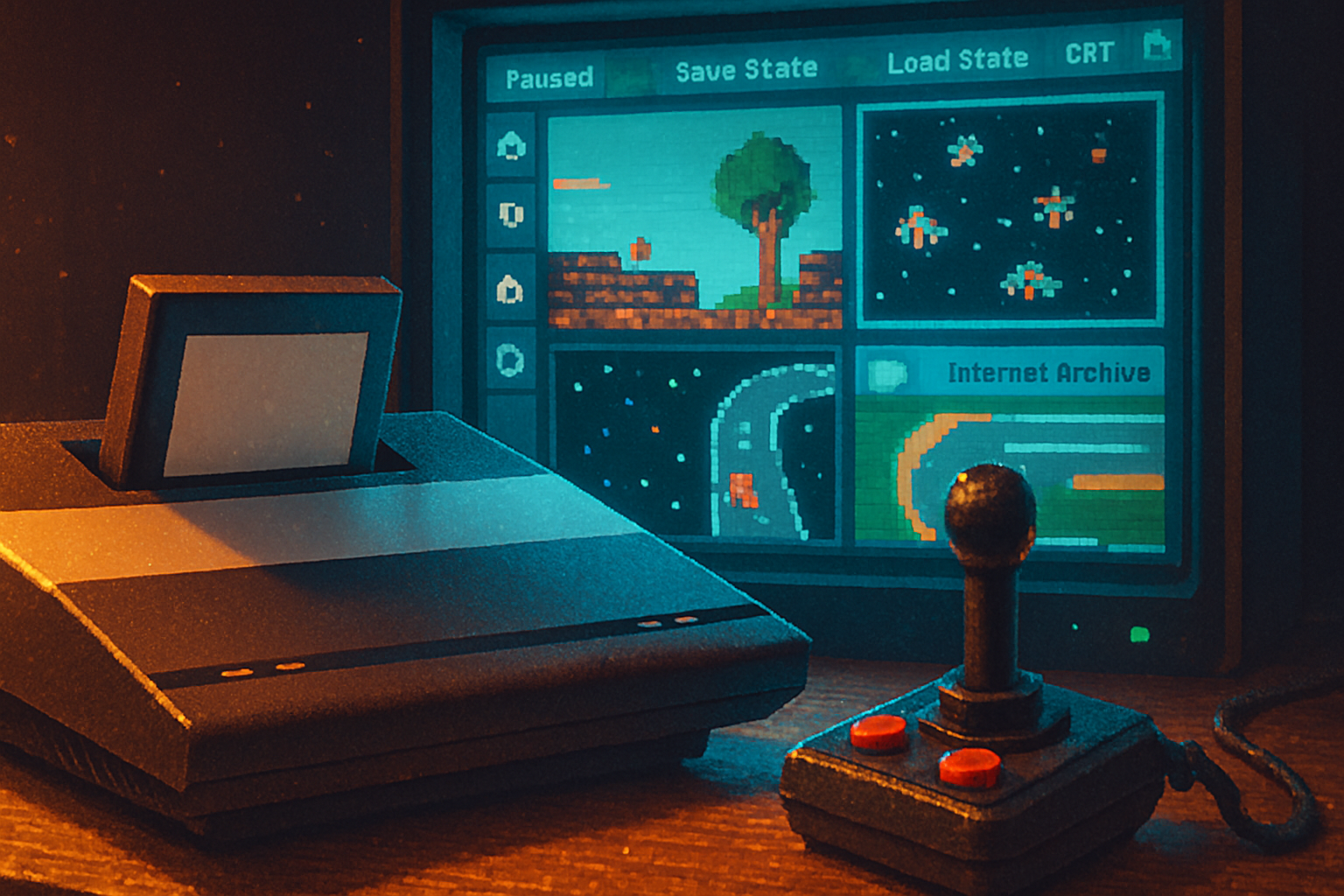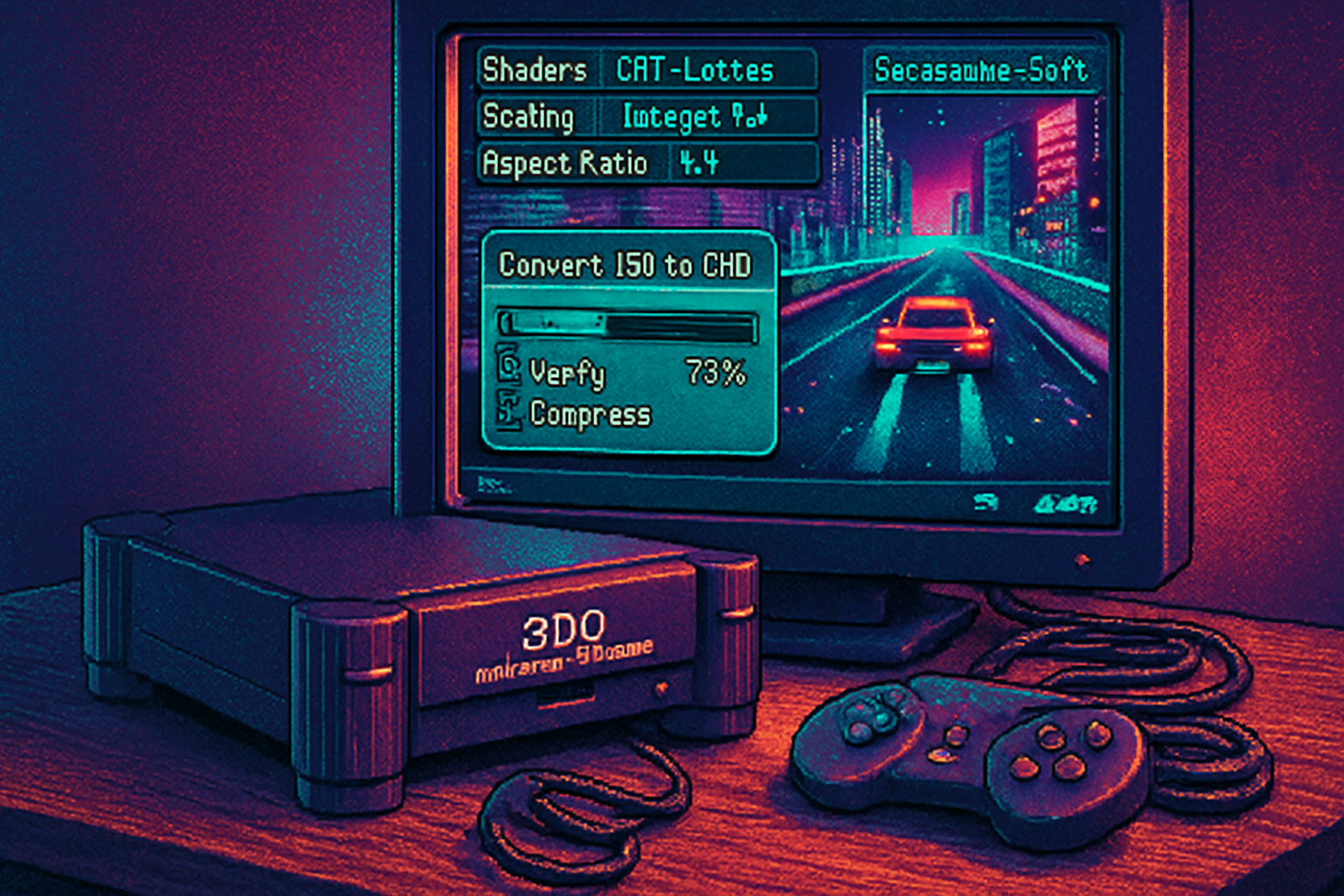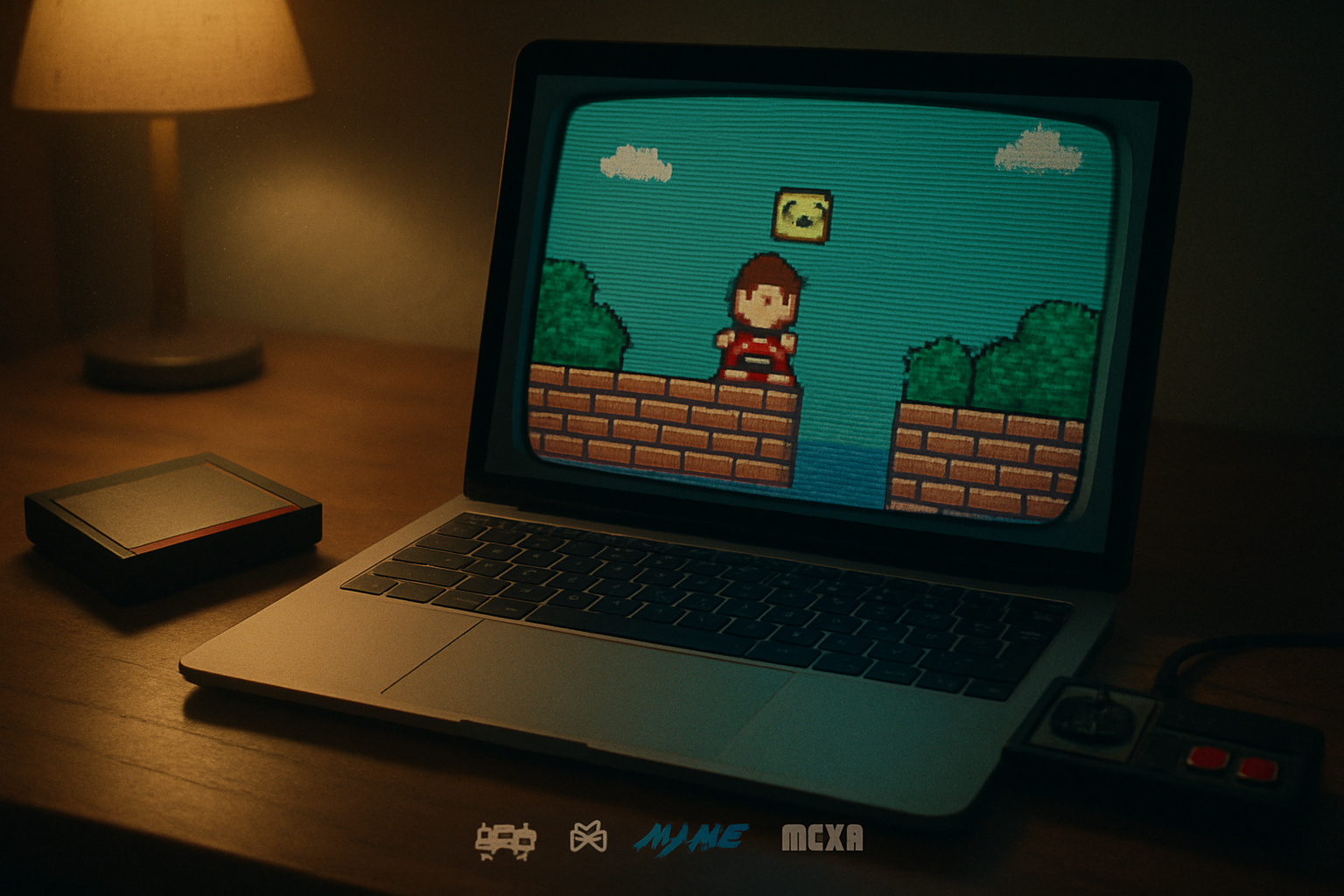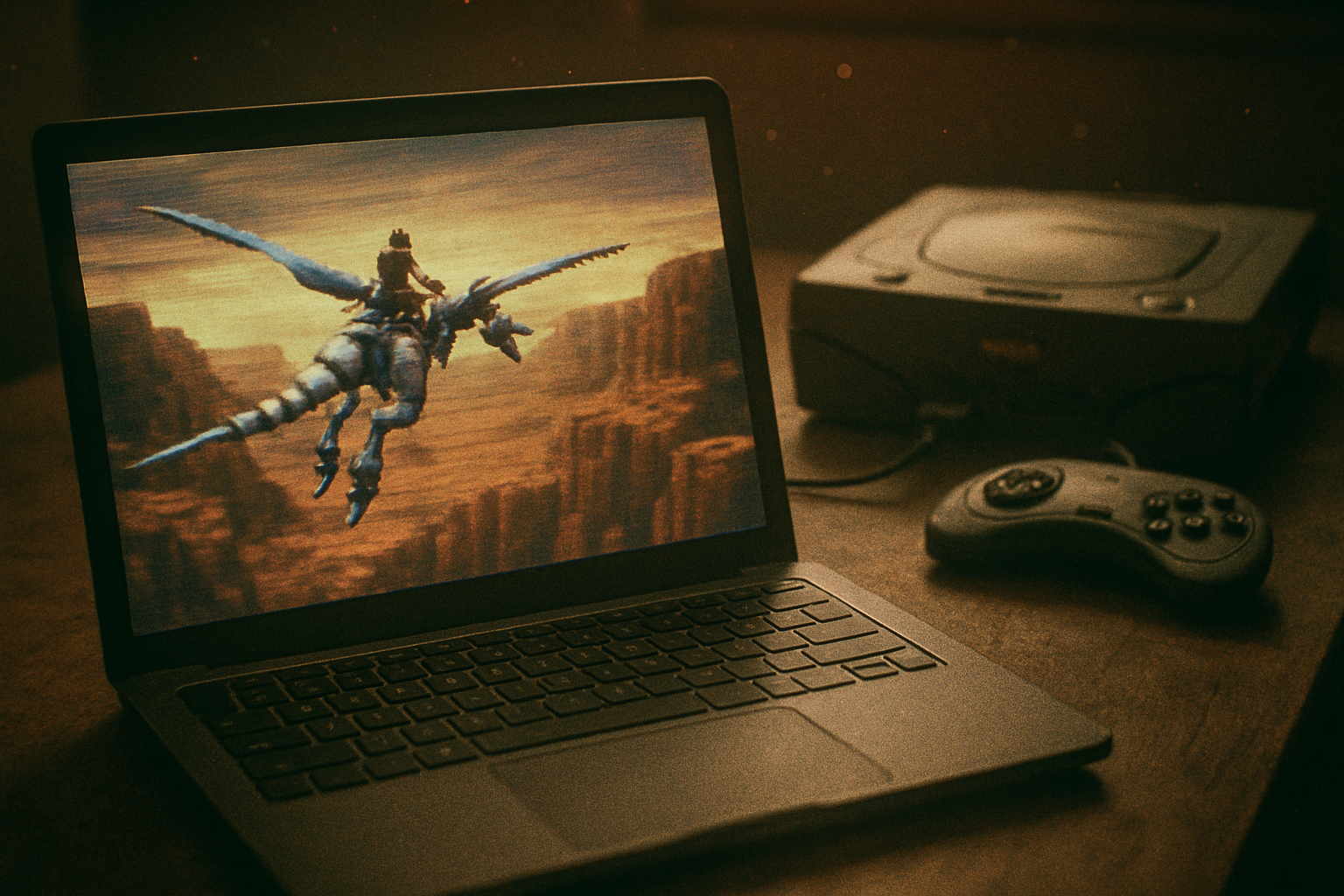· retrogaming · 7 min read
The Ultimate Guide to Atari 7800 Emulators: Which One is Right for You?
A practical, in-depth comparison of the top Atari 7800 emulation options - from preservation-grade MAME to browser-based play - with setup tips, controller advice, legal notes, and recommendations for different types of players.

Why Atari 7800 emulation still matters
The Atari 7800 is an often-overlooked jewel of the late-1980s console era: a 6502-based system with its own graphics hardware and backward compatibility with Atari 2600 titles. Today, emulation brings that library to modern platforms, letting you relive classics, test homebrew, and preserve rare cartridges. But not every emulator is the same - some emphasize historical accuracy, others convenience or ease of use.
This guide compares the best ways to play Atari 7800 games in 2025, explains tradeoffs, gives setup and performance tips, and helps you choose the right option for your needs.
Core emulation challenges (briefly)
Emulating the 7800 presents a few specific challenges:
- Unique graphics hardware (the MARIA-like approach used by the 7800) and timing-sensitive sprite/video behavior.
- Sound differences and optional compatibility with Atari 2600-style hardware.
- Cartridge variants and homebrew titles that sometimes rely on unusual hardware tricks.
Because of these variables, emulator choice often boils down to: accuracy vs. convenience.
The top options at a glance
- MAME (desktop) - Best for accuracy, preservation, debugging.
- RetroArch + MAME core - Best multi-platform frontend with convenience and modern features.
- Internet Archive / browser emulators (JSMESS/JSMAME-based) - Best for instant play and casual exploration.
- ProSystem (legacy Windows / classic builds) - Lightweight, historically popular option (older users).
- Stella - Not a 7800 emulator, but the de facto standard for Atari 2600; useful when you want to focus on 2600 compatibility.
Notes and links:
- MAME official site: https://www.mamedev.org
- RetroArch: https://www.retroarch.com (and core docs at https://docs.libretro.com)
- Internet Archive Atari 7800 library (browser play): https://archive.org/details/atari_7800_library
- Stella (Atari 2600): https://stella-emu.github.io/
In-depth comparison
1) MAME - accuracy and preservation
Pros
- Extremely accurate and meticulously maintained emulation core for many systems (including the 7800).
- Strong focus on preservation and hardware correctness; excellent for homebrew testing and debugging.
- Powerful developer tools (debugger, logging, state inspection).
Cons
- Not as user-friendly out of the box - setup can be fiddly (ROM set versions, parent/clone dependencies).
- UI and configuration are less polished than consumer-oriented frontends.
- Can be resource-heavy on low-end systems.
Best for
- Preservationists, homebrew developers, and anyone who wants the most faithful reproduction possible.
Tips
- Use the correct ROMset version for your MAME build; mismatched ROM lists are a common cause of failures.
- Check the MAME documentation and the ‘romsets’ naming conventions for proper placement.
2) RetroArch (with a MAME/libretro core) - best modern frontend
Pros
- Comfortable, polished frontend with unified settings across systems (shaders, savestates, rewind, achievements where supported).
- Works on Windows, macOS, Linux, Android, consoles, and more.
- If you pick a MAME-based libretro core, you get MAME accuracy with a friendlier UI.
Cons
- Core versions vary - not every libretro MAME build is identical to the upstream MAME release.
- Some advanced debugging features from native MAME may be missing.
Best for
- Players who want a modern UX (quick configuration, controller hotkeys, overlays) but still care about accuracy.
Tips
- Install the MAME-based core if you want the best compatibility for 7800 titles.
- Use RetroArch’s input configuration and ‘hotkey’ system to manage save states and rewinds cleanly.
3) Internet Archive / browser-based emulators - instant and frictionless
Pros
- No installation required; play many 7800 games directly in a browser.
- Great for casual nostalgia and quick testing.
- Internet Archive pairs many titles with scanned manuals and metadata.
Cons
- Browsers impose performance and input limitations (latency, limited controller mapping in some cases).
- Fewer advanced features (no deep debugger, limited shader/performance tuning).
Best for
- Casual players, newcomers, or anyone wanting to try titles without managing ROM collections.
Tip
- Use a modern browser and a wired controller for best responsiveness.
4) ProSystem and older 7800-focused emulators (legacy)
Pros
- Historically simple to use and lightweight.
- Some users still prefer older tools for quick play on older Windows machines.
Cons
- Many of these projects are unmaintained and have lower compatibility than MAME-based solutions.
- Lack modern conveniences like cross-platform support or frontend integration.
Best for
- Users with legacy setups who want something simple and lightweight.
Note
- If you pursue older projects, always check compatibility notes and community threads for updated builds.
5) Stella - the 2600 gold standard (relevance to 7800)
Stella is strictly an Atari 2600 emulator, not a native 7800 emulator. However, many 7800 cartridges include Atari 2600-compatible code, and if your interest is 2600-specific titles (or 2600-mode play from a 7800 cartridge), Stella remains the go-to emulator for Atari 2600 accuracy and features.
Link: https://stella-emu.github.io/
Which emulator is right for you? (user profiles)
- You care about accuracy, preservation, or debugging - MAME (native) + documentation.
- You want a modern, cross-platform interface with convenient features - RetroArch + MAME core.
- You want instant browser play without installing anything - Internet Archive’s 7800 collection.
- You’re using a very old Windows PC or want a tiny footprint - look into legacy 7800-specific builds (community-maintained).
- You primarily want to play/research Atari 2600 titles - Stella.
Quick setup guide (common steps)
- Decide on the emulator (MAME, RetroArch, or browser).
- Obtain the emulator from the official site (links above) and install it.
- Acquire your ROMs legally (see legal section below). For MAME, place ROM files in the ‘roms’ folder and ensure they match your MAME version’s expected set. For RetroArch, load ROMs through the core menu.
- Configure a controller - map standard joystick buttons, and set hotkeys for save states and rewinds.
- Tweak video/audio in the emulator settings (VSync, audio buffer size) for the best experience.
Note about ROMs and MAME: MAME’s accuracy depends on matching ROM sets. If a game fails to load, check the MAME version and ROM naming; mismatches are the most common problem.
Controller tips and special inputs
- Most 7800 games use a simple digital joystick (one or two buttons). Modern Xbox/PlayStation-style controllers map easily.
- Some titles or accessories used paddles or analog input. Emulators let you map analog axes or emulate paddle behavior with thumbsticks and deadzone settings.
- For the best latency - use a wired controller, enable any low-latency input options in your emulator, and avoid USB wireless dongles that add lag.
Performance optimization (practical tips)
- Desktop MAME - use a recent build - they’re optimized and have bugfixes. Lower rendering resolution or disable shaders on very old GPUs.
- RetroArch - enable ‘Hard GPU Sync’ or tweak ‘Frame Throttle’ for low-latency setups. Try different video drivers (OpenGL vs Vulkan) if available.
- Browser - close other heavy tabs/apps, use a current browser version, and use a wired controller.
Troubleshooting - common problems and fixes
- Game won’t start - verify ROM name and version; check if the emulator requires a parent ROM or BIOS (7800 generally doesn’t require external BIOS, but set matching matters).
- Audio issues (crackling, echo) - increase audio buffer size or try a different audio backend.
- Input lag - use wired controller, enable low-latency options, and turn off vsync if it helps (but that may cause tearing).
- Visual glitches - try a different core/version or enable compatibility/timing options in MAME/RetroArch.
Legal and ethical note
Downloading ROMs you do not own is illegal in many jurisdictions. Emulation itself is legal in most places, and many communities emphasize preservation: if you own the original cartridge, you can often use a personal dump for emulation. For preservation or academic research, rely on legitimate sources or communities that verify legal provenance.
Useful reading:
- MAME preservation philosophy: https://www.mamedev.org
- RetroArch core documentation: https://docs.libretro.com
Frequently asked questions
Q: Do I need a BIOS file for Atari 7800 emulation? A: The Atari 7800 does not use a separate system BIOS like some consoles. However, specific emulators may require ROMs to be placed in precise folders or use parent ROMs for clones.
Q: Can I use my 7800 cartridge with these emulators? A: Yes - with the right hardware (cartridge dumping tools) you can dump cartridges to ROM files and use them in emulators. That process requires hardware and care; consult preservation guides.
Q: Which is the most accurate emulator? A: Native MAME is generally regarded as the gold standard for accuracy and preservation for many classic systems, including the 7800. RetroArch’s MAME core is a great alternative when you want a better UI.
Final recommendations
- If you want the single most accurate, actively maintained solution - start with MAME (and learn a bit about ROMsets).
- If you want the best combination of accuracy and modern usability - install RetroArch and use the MAME/libretro core.
- If you want to dip your toes in quickly - try the Internet Archive’s Atari 7800 collection in your browser.
Whichever path you choose, take care to use legitimate ROM sources, back up your configuration, and enjoy rediscovering the 7800’s library on modern hardware.



